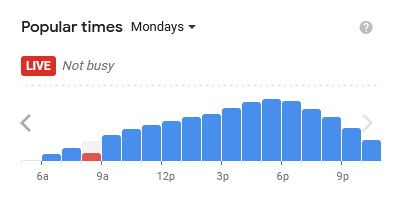
After running successful pilot programs, Walmart has made sensory-friendly hours an official practice. These hours are meant to make Walmart a less overwhelming place for those who struggle with sensory overload. This change began Sept. 10.

According to Walmart’s news release, “quiet-hours” will be from 8-10 a.m. This aligns with business of the store as a whole, allowing patrons to visit during a less chaotic time of day.
While many people can tune out the noises of grocery stores — sounds of buzzing electrical lights, industrial freezers and fridges, music playing over the sound system, squeaking shoes and cart wheels and people talking — those who cannot sometimes struggle.
Denice Strong, a mother to sons who experience sensory overload, explained that these changes are a step in the right direction.
“I think that’s so smart that they’ve chosen to do that,” Strong said.
When she takes her kids to the grocery store, it is common for one of her sons to immediately start “stimming,” a shorthand term for self-stimulating behavior used to cope with overstimulation. According to Cleveland Clinic, these behaviors help regulate emotions.
To make these “quiet-hours” happen, “we don’t have to touch anything or do anything, it just comes on,” explained Walmart operations manager Christine Bailey. In the mornings, she said she noticed “the music all of a sudden came on and the lights got little brighter and so that was it.”
During Walmart’s “quiet-hours,” specifically at the Provo Neighborhood Market Walmart in Provo, there was no noticeable change in lighting. The average light read as 270 lux at 8 a.m. on Nov. 15. Compared to an average reading of 265 lux the night before, Walmart was slightly brighter during “quiet-hours” because of added sunlight.
As a whole, Walmart tends to be brighter than other grocery stores. Smiths has an average light reading of 157 lux, more than 100 lux dimmer than Walmart.
Despite this, Walmart and Smiths are comparable at averages of 59-60 decibels. During Walmart’s “quiet-hours,” there was an average noise level of 54 decibels, the radio was completely turned off and there were fewer people.
Strong pointed out that these hours are useful to mothers dropping kids off at school, but not as much to mothers with their children. She estimated the best hours for mothers with children would be from 3:30 to 7 p.m. According to Google Maps, these are some of Walmart’s busiest hours.
“Being unable to take a child with you to the grocery store can be crippling,” Strong said.
Strong pointed out that going to the grocery store with a child who struggles with sensory overstimulation can be a significant struggle.
“Overall, I think in addition to providing a needed service, it is also a way to attract shoppers and make them brand loyal,” BYU psychology professor Terisa Gabrielsen said. Disney has similar practices, offering sensory-reduced experiences in order to make its products available to a wider audience, Gabrielsen explained.
Walmart’s “quiet-hours” not only bring brand loyalty but also offer relief to those who experience sensory overload in a noisy world that most can tune out




